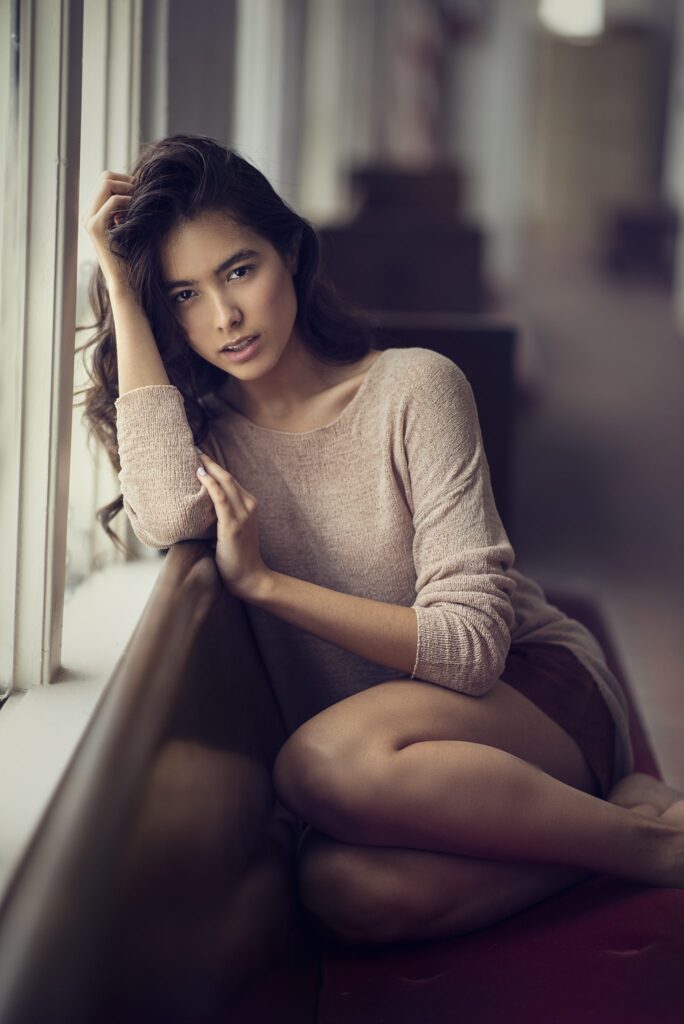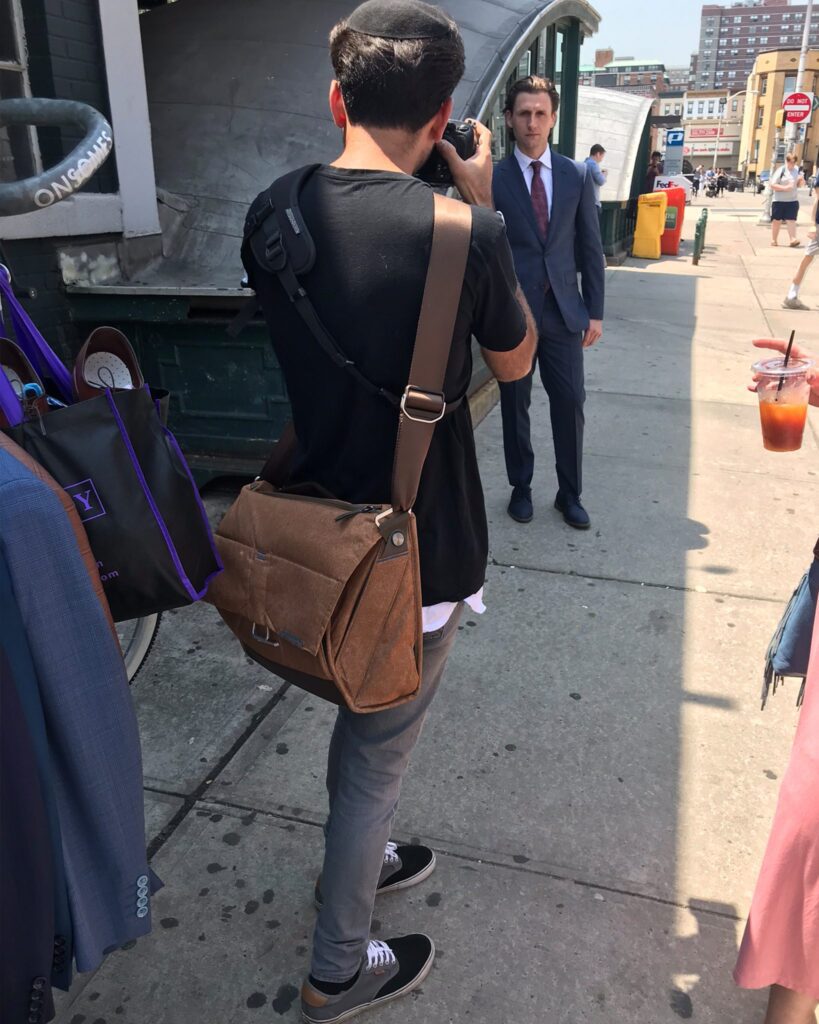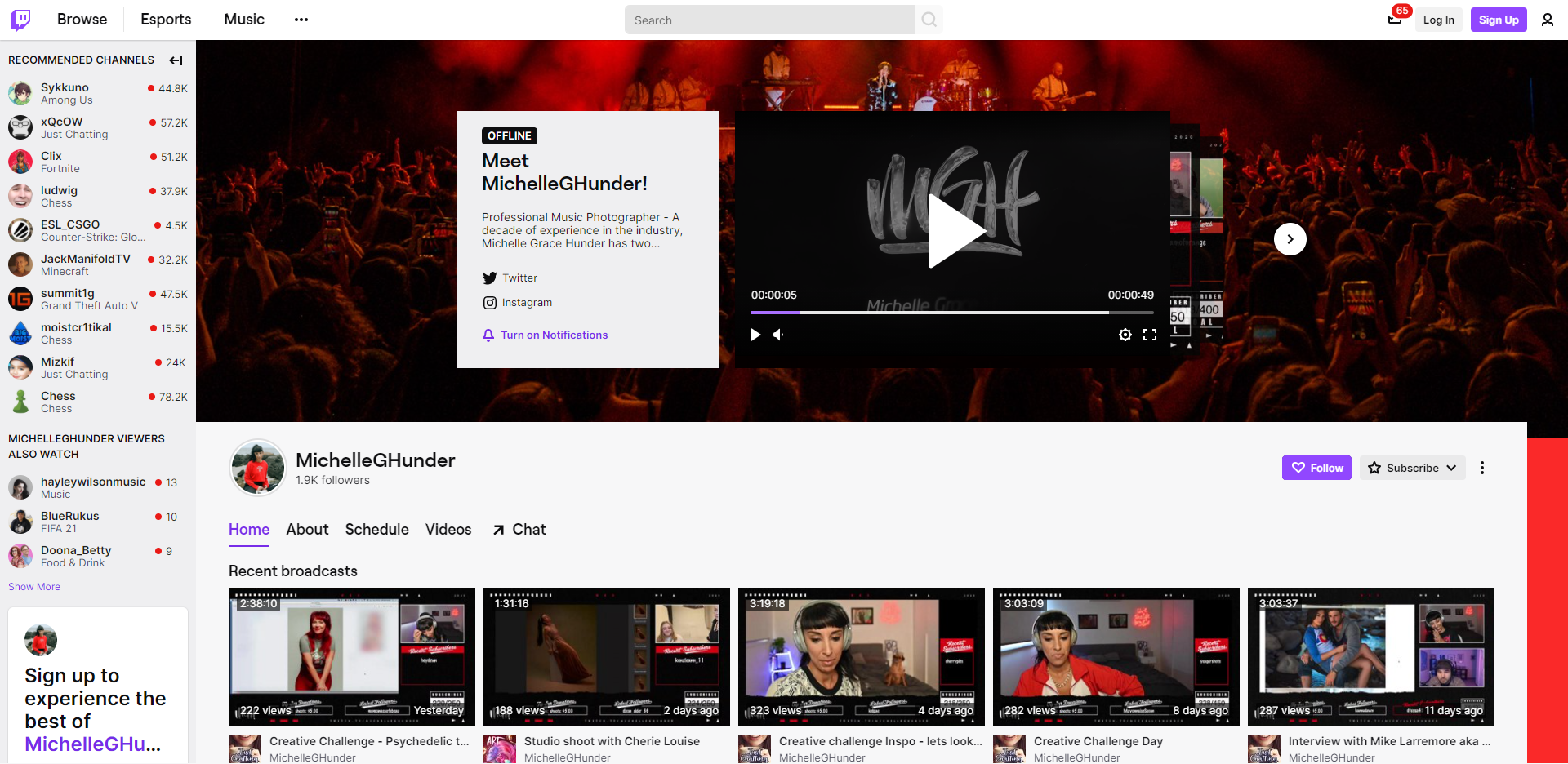When was the last time you read a comment on a photographer’s Instagram feed asking, “Wow! How did you get such a powerful expression?” Probably never. However, it is a common occurrence for us to get questions about settings, lighting or post-processing.
This leads me to believe that photographers are easily caught up in technical details. I wonder if this is because it is easier to blame unhappiness and feelings of unfulfillment on things outside of a human’s control. It’s easy to say “I don’t have the right gear” or “I don’t know the secret to nailing amazing skin tones.”
I have been incredibly blessed to work with, and alongside, thousands of photographers in my career. I can’t remember the last time we discussed how we connect with our subjects, or how to make them feel comfortable in front of the camera. Instead, we talk about retouching methods, gear, and other superficial details. While these things may seem important to a photographer, any non-photographer who looks at the same photo would not be able to tell the difference in the gear used to capture it or the retouching methods. Instead, the layman connects with the expressions in the photo. In my opinion, that is what photographers should be focusing on if they want their photos to have a critical impact.

A cheesy smile, blank look or forced laugh is cute for exactly two people — your subject’s mother and grandma. Instead, a powerful expression has the power to speak to the world, and transcend all human barriers. Throughout history the greatest portrait photographers have one thing in common: their images convey a genuine emotion.
In this article I will share the little I’ve learned over the years on how to make a subject feel comfortable in front of the camera and then capture those poses and expressions effectively.
When I began my photography journey ten years ago, I found myself in a conundrum: I was an introvert, and was hindered in my communication with and connection to a stranger in front of my camera. I decided to pursue a personal endeavor called The Project, where I had to photograph photographers and make them feel comfortable in front of my lens — a real challenge! Over a two year period, I managed to communicate and connect with the most difficult subjects. Here is what I’ve learned:


Most people like to talk about themselves, their interests and hobbies.
When they do, they automatically let their guard down and in a way become vulnerable. That vulnerability allows you to capture raw emotion. This is easier said than done so here’s a handful of tricks that will help you accomplish this goal.
When you first meet your subject, leave your camera tucked away in your bag for the first 15 minutes.
Gear makes people nervous. Imagine walking into a doctors office to see him holding a syringe in each hand. To us a huge camera and lens is an ordinary item, but to others it’s intimidating in the same way as a syringe. I spend the first 15 minutes of every portrait session just talking to my subjects.
The goal is to get your subject to talk.
When you let a person do the talking they become comfortable around you. After some basic small talk, I ask, “What kind of interests or hobbies do you have?” When they respond, I ask them follow up questions using how, why, when, and where. Once you can see your subject loosen up, and begin to share passionately, you can slowly introduce a camera. Tell them to keep talking as you screw the lens on and take the lens cap off. Sneak in a quick shot while they talk and say “no need to pose yet, I’m just testing the light in this location.” After that, look at the camera and say “WOW” even if you completely missed focus and your subject looks like an elephant.


Always have a positive remark when you look at the camera preview.
Even if your camera is dead and missing the memory card. Look at the camera and say “Wow! We just got the best shot of the day.” Your subject waits anxiously after each shutter click to hear your response. They need your feedback. Even the best models I’ve worked with have told me this. A photographer’s feedback is more important than anything else.
The first 50 shots are just to warm up your subject and make that clear.
Tell them, “By the way the first 50 shots we take today are just for us to warm up, I’ll let you know when we are ready for the real deal.” This gives them permission to relax.


NEVER use words like “relax.”
Far too many people use this word. No one wants to be told to relax. If you want someone to relax, you need to make them relax. The trick I use is to tell them “close your eyes and count to 5 then softly open your eyes” When their eyes are closed I say “do you feel those muscles tensed up in your face?” They always respond in the affirmative. I say, “let them soften up as you breathe.” Without fail I always nail the first shot once they open up their eyes. This works especially well with children.
Be real with your subjects.
Throw the ego out the door. It’s impossible to connect with someone who has a strong ego. Humans are drawn to someone who is humble and relatable. It makes them feel feel comfortable and allows them to be themselves.


Give your subjects permission to look bad.
I make it clear that over the span of the two-hour session, the goal is to get five amazing portraits. The world only cares to see a few amazing images, not 100 mediocre ones. When that idea sits in the back of their mind throughout the session, it automatically brings down the level of expectations to an attainable one, leading to a dissipation of tenseness.
Having confidence is probably the last step to making your subjects feel comfortable.
It is possible to be confident without having a massive ego. When a person knows they are in good hands, they will automatically feel more relaxed. I have found that portraying confidence through words is very difficult. Honestly, I believe that genuine self-confidence is a reflection of what a person thinks of themselves and it is a feeling that people in this individual’s vicinity simply feels. I think this is a subject that deserves its own article and its not something I feel comfortable enough discussing yet, but I can say that it can’t be faked. When it is fake, it comes across as being pompous.
It takes years to develop and comes only once there is an intrinsic self-awareness, and satisfaction and fulfillment as a result of it. I’ll let you know when and if I ever get there! Maybe I’ll even write an article about it.


About Dani Diamond
Dani Diamond is an East Coast photographer whose breathtaking portraits and signature style have taken over all forms of social media, from Facebook to Fstoppers.
Dani’s gear of choice is his Nikon D850 and his favorite lens the 85 1.4g. He uses the 85 to allow him to be close to his subject but also allow for nice compression and blur. The “blur” is what got Dani interested in portraits in the first place, his curiosity pushed him to find out how he could create that, too. The rest is all in the details, and as Dani delved into the world of photography, he made a new path.
The process of creating such gripping photos comes with something every artist needs. A workstation. Dani’s workstation is like no other, equipped with a Wacom Intuos Pro tablet, Palette Gear, and a surround sound to so Dani can work in harmony while retouching. He has created a Facebook group for music retouching (Epic Remixes For Retouching), where other photographers and editors share their work jams and share retouching secrets.
Dani believes that you don’t need to be talented to be successful, but you need to be ambitious. He hopes to continue his career in fashion and portraits for the rest of his life.



